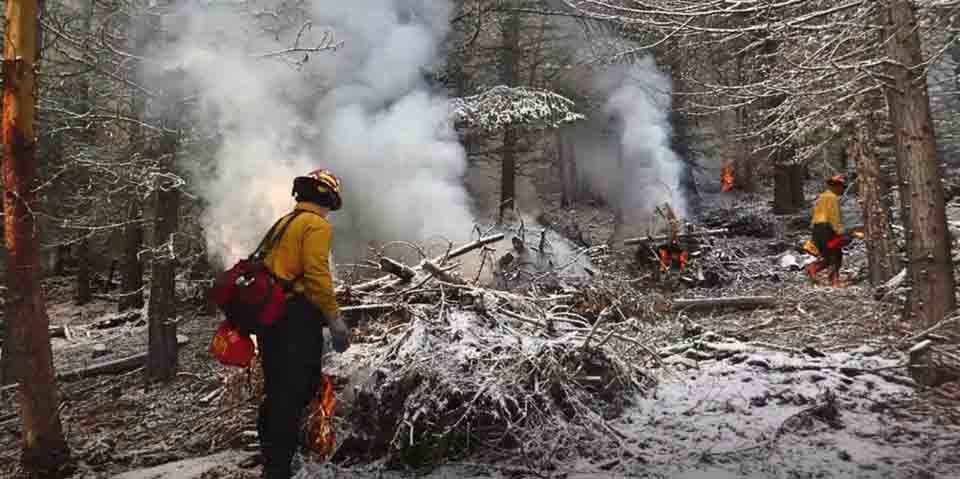Setting Fire To Oregon’s Forests With Controlled Burning For Forest Health

ASHLAND, Ore. — In the Siskiyou Mountains Ranger District, the U.S Forest Service and other groups are performing controlled fire, also known as a prescribed fire over a 70-acre section near Horn Gap in Ashland Forest Resiliency Unit 37.
Wednesday’s fires covered 10 to 15 acres as part of the Ashland Forest Resiliency Project, chosen to burn as it strategically aligns with previous burns, serving as a protective buffer against potential wildfires.
Why Are Controlled Fires Burned In Forests?
Fires have been occurring in forests at regular intervals since time immemorial. As forest managers have taken better control of the fires to reduce the devastating effect they have on the environment and people in surrounding areas, the successful suppression of wildfires has also had unintended consequences.
When fires are suppressed, forest canopies get denser, with trees and underbrush unrestricted by fires. While flammable materials gather in forests, insect infestations increase and invasive plant species infiltrate, disturbing indigenous vegetation.
Forest managers and other experts burn controlled fires to unlock the benefits that regular fires historically provided, and prevent fires from turning into wildfires, posing a potential threat to life and property as they sweep across an area. Human interference with nature’s balancing act has created the need for further interventions, to preserve the forests, and limit damage.
See also: Oregon Wildfires Could Trigger Cancer, Reveals A New Study
Kit Colbenson of the U.S. Forest Service confirmed that they are ensuring the forest is healthy, particularly with the impact of climate change. Colbenson said that they aim to protect the resources they have and, “We want to make sure we’re adjusting to having a healthy forest that can sustain the climate change.”
Controlled Fires In Oregon Forests
A senior forest scientist for the Nature Conservancy in Oregon, Kerry Metlen, confirmed that the importance of the controlled burns becomes even more apparent with predictions of hotter, drier conditions as the fires affect the future of Oregon Forests. The organization provided resources by thinning the forests out, giving the big old pines more to hang on with.
Two kinds of controlled burning are generally used but follow a carefully laid out plan:
- Pile burning: Piles of vegetation are burned individually. Leaves, tree limbs, and other debris are chopped up, collected, and stacked for burning when weather conditions permit. The process is often used when conditions are not safe to set a larger fire.
- Broadcast burning: Fires are lit across a few acres to thousands of acres of land
The Ashland Forest Resiliency Project employs thinning and pile burning to mitigate the negative effects of dense vegetation accumulated after a century of fire suppression. This underburning process contributes to the protection of old-growth trees, helps release nutrients, and improves the ecosystem’s resilience overall.
Metlen has seen many places where well-intended suppression of wildfires caused striking changes to the forest. She said, “The work we do in the woods matters.”
